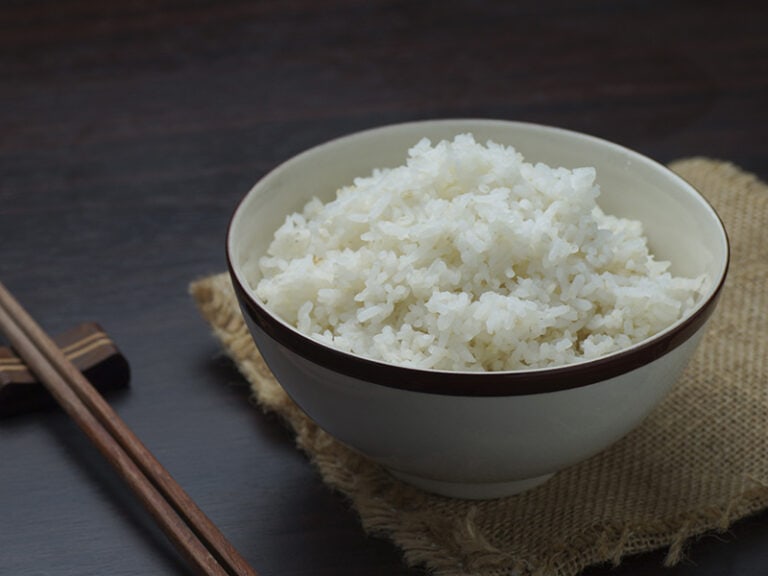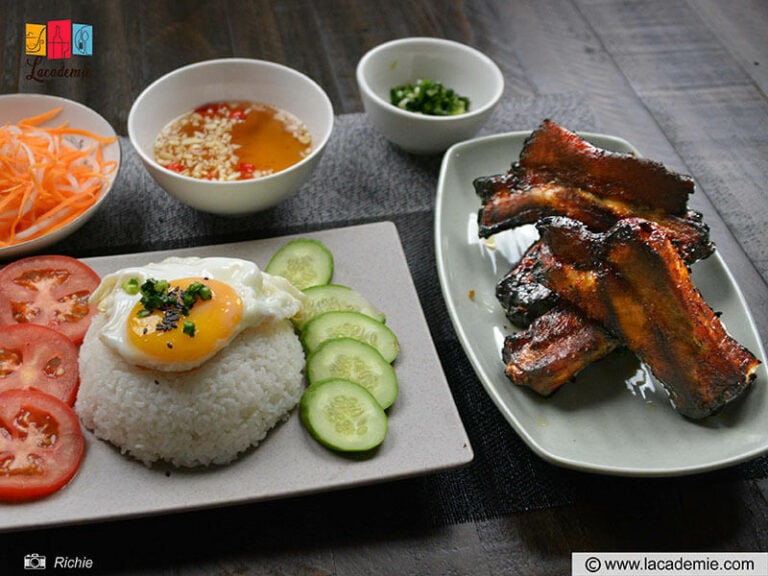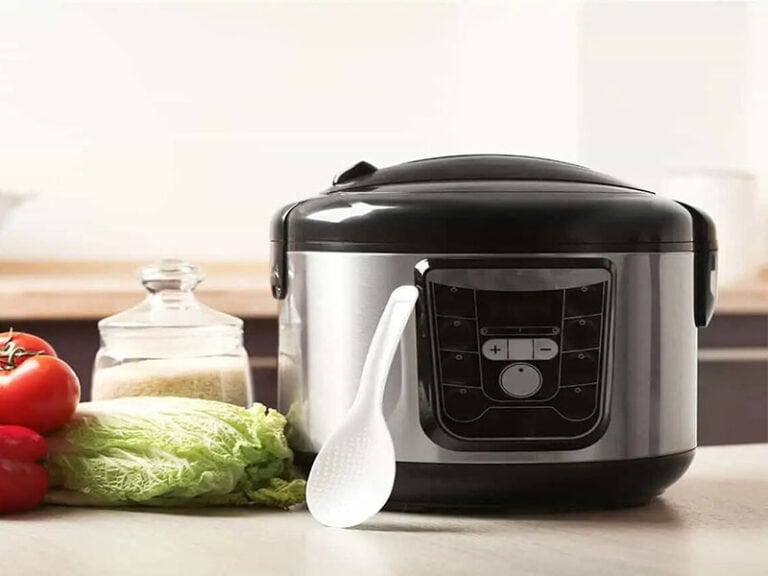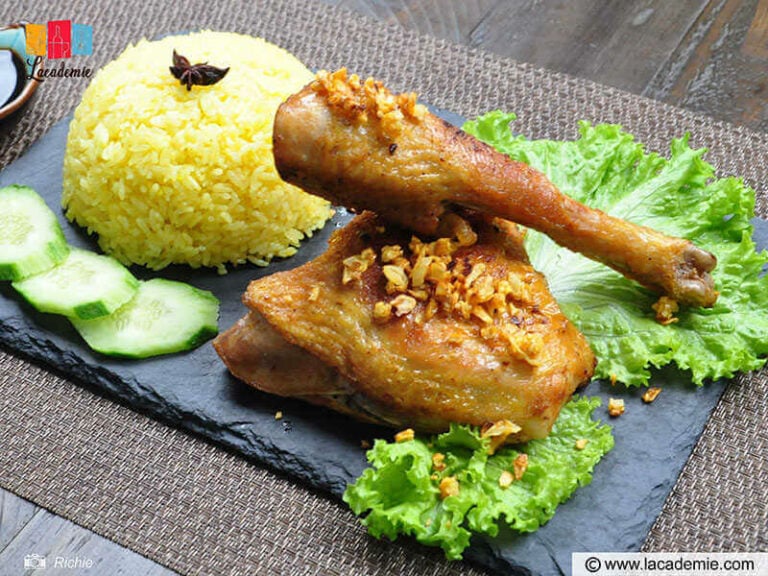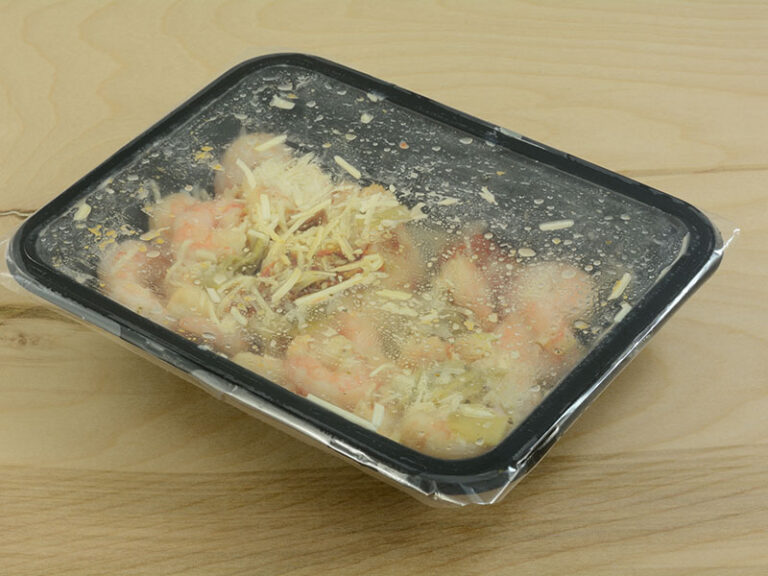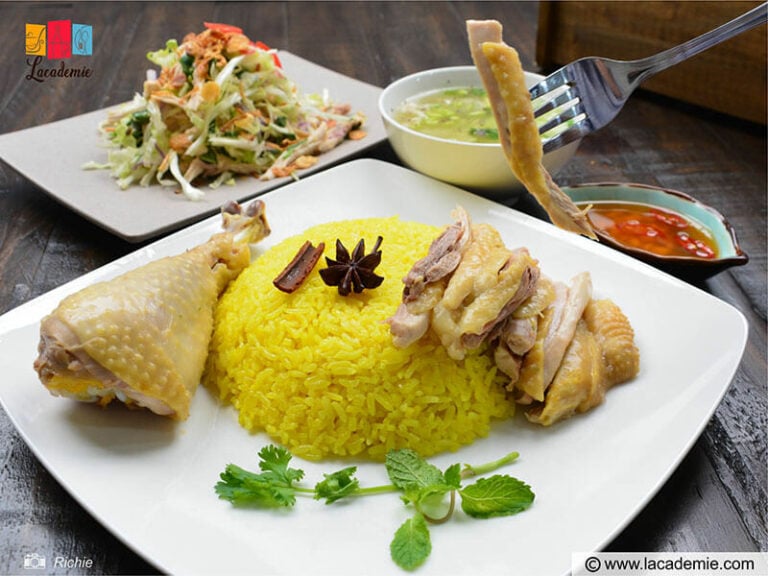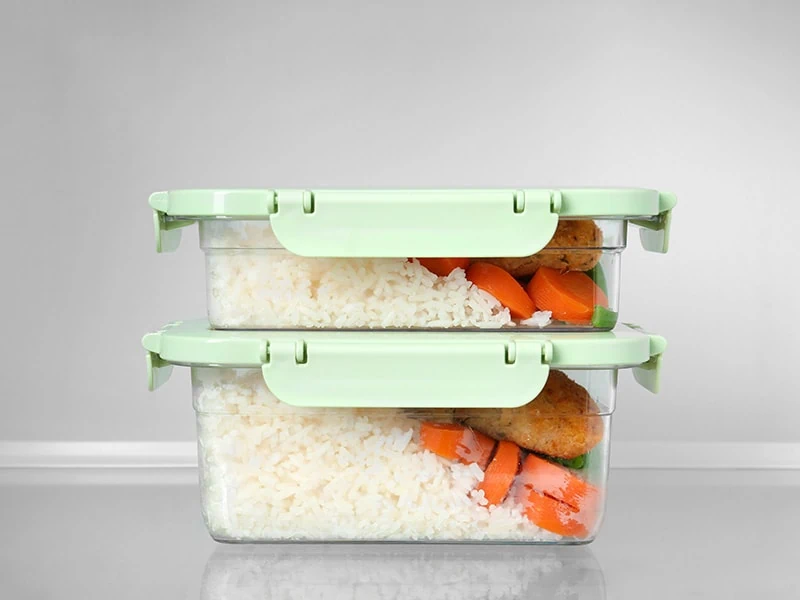
“Does rice need to be refrigerated?” You’ll ask yourself that question when you cook more than the perfect amount of rice to serve. You genuinely don’t want to mess your kitchen up. Not just that, you have so many more questions about storing your rice.
How could you preserve this sack of rice later? What to do with the leftover cooked rice after your meal? Would you need to put them in the refrigerator as well? These questions are not that tricky, and this post can give you everything you want to know about storing your rice.
Do You Need To Refrigerate Rice?
Rice is the staple food for people around the world, though to store them, you need to address some aspects first. I will give you a quick pep about those factors in these sections below.
Uncooked Rice
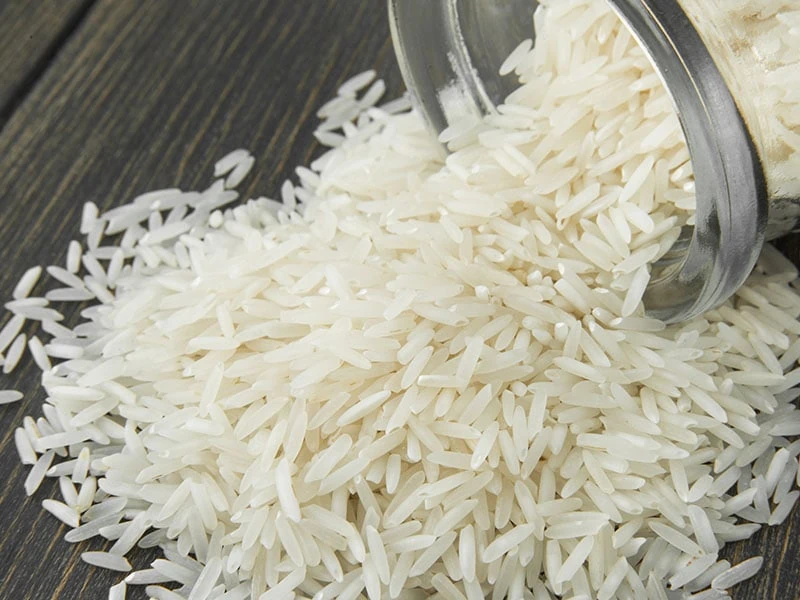
The process of making rice starts with harvesting paddy. People remove the hard yellow cover, which is called the husk. They then polish the bran layer of rice. After this step, rice will be packaged and delivered to the suppliers.
After reading the harvesting process, you might be wondering if rice is a form of vegetable or not. The answer can be both “yes” and “no”, depending on your definition of vegetable.
Uncooked rice, or raw rice, is that pack of rice you bought downright from a grocery store or your local market. It is the rice before any cooking process like parboiling or steaming.
So how do you store rice? You can pour your rice into a dry container and put it in a cool temperature area like in the pantry with other condiments. If you have a large amount of rice, you can store them somewhere more spacious, like under the kitchen counter.
You have to maintain that dry condition, so it is better to use an airtight container. You also need to check your rice periodically to check for mold or insect infestation.
It is unnecessary to keep uncooked rice in the refrigerator or the freezer because it is naturally waterless. At the same time, like other condiments or food, refrigeration can help uncooked rice last longer.
You can learn about rice and how rice is made before ending up on the dining table.
Cooked Rice
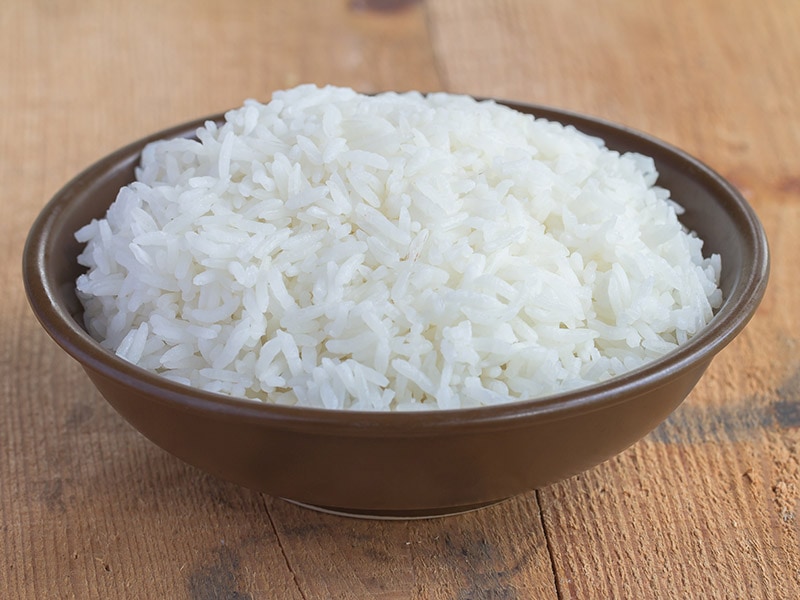
You don’t have to store your rice if you want to use it after several hours. But you should refrigerate that rice when it is too soft and your kitchen seems to be hot and humid.
When your rice is too mushy, it means your rice contains too much water. This dampness can nurture bacteria. Bacteria can also absorb water in the air through humidity. So it is not typical weather for you to leave your rice outside on hot and humid days.
One more thing that you want to be wary of is the condition of your rice. When you spoon the rice out of the pot, try not to contaminate that rice with other food. This factor raises the potential of bacteria growing in your rice, which spoils your rice quicker.
How Long Can Rice Last?
So you have collected enough information to develop the base of what can spoil your rice. But how long can you maintain the edible phrase? This section is where you can learn about extending your rice shelf age.
The table below will summarize the shelf life of rice under three different storing environments.
Uncooked Rice
You can preserve your sack of rice from 2 years to 30 years at a casual temperature. Some people can store their rice for years in their bunker or their basement. The biggest challenges of maintaining uncooked rice are vermin, dirt, and other contamination. (1)
In the case of first-rate brown rice, you can keep them for 3-6 months due to its oily nature. If you keep your brown rice in your refrigerator, it is still edible after 6-12 months. And you can extend brown rice life to 12-18 months by freezing them.
Even though you can keep your rice for years, it is still necessary to check the use-to-date details on the product package. After all, the manufacturer notes that date on the pack for safety reasons.
Cooked Rice
Your rice came out perfect: not too dry or too mushy. Your kitchen has a stable room temperature, and its humidity is standard. You say you can maintain these conditions in your kitchen for days.
If you are confident with your kitchen, you can keep your cooked rice for some hours or even overnight. I still encourage you to refrigerate your rice two hours after it’s cooked.
People indeed like to leave their rice overnight or longer, but they can’t stop bacteria or fungus in the air from contaminating their rice. When they consume this rice, there’s a chance for them to suffer from food poisoning.
If you keep your cooked rice in the refrigerator (applying to all types of rice), you can still eat it after 4-6 days. Just remember to put your rice in an airtight container first to prolong its shelf life.
In case you want to freeze your cooked rice, you can maintain its edible condition for around six months.
Should Rice Be Stored In The Freezer?
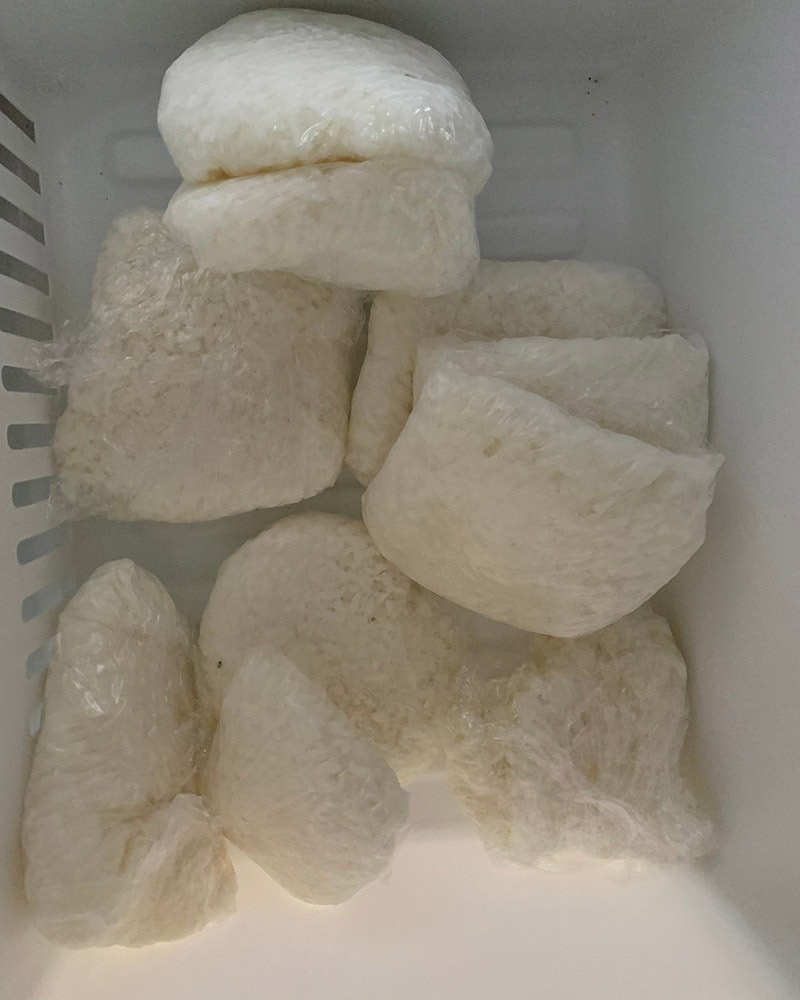
You can keep both uncooked and cooked rice in the freezer, and it is the ultimate way to store rice long-term.
With uncooked rice, you can toss them into your freezer right away. But it would be better if you learn the proper way to freeze uncooked rice that I will go into detail later. Since brown rice has a short shelf life, it is advisable to freeze uncooked brown rice.
Freezing cooked rice is an effective way to save it for later use. However, the outcome will be dry and bland like other frozen foods. The rice texture will alter, and it is no longer as good as newly cooked rice.
The most important standard that you need to control when things come to freezing food is maintaining the temperature below 0 Celsius degrees. This will prevent bacteria from growing.
With a household freezer-refrigerator, it is almost impossible to keep a perfect condition to freeze rice since there’s always a chance that someone will open the freezer door to get something. Your rice would have a higher chance of getting mold infestation in this situation.
Signs Of Rice That Has Gone Bad
You try to save your rice, but what if your rice still goes bad? You need some signs. But how do you know that your rice has expired? Here are some indications that you can notice and avoid consuming expired or spoiled rice.
Uncooked Rice
Your uncooked rice can be very tough, but some enemies can break your “tough rice” down. This section will present to you what those enemies are and how they defeat your rice.
You See Insects, And Rice Is Breaking Down
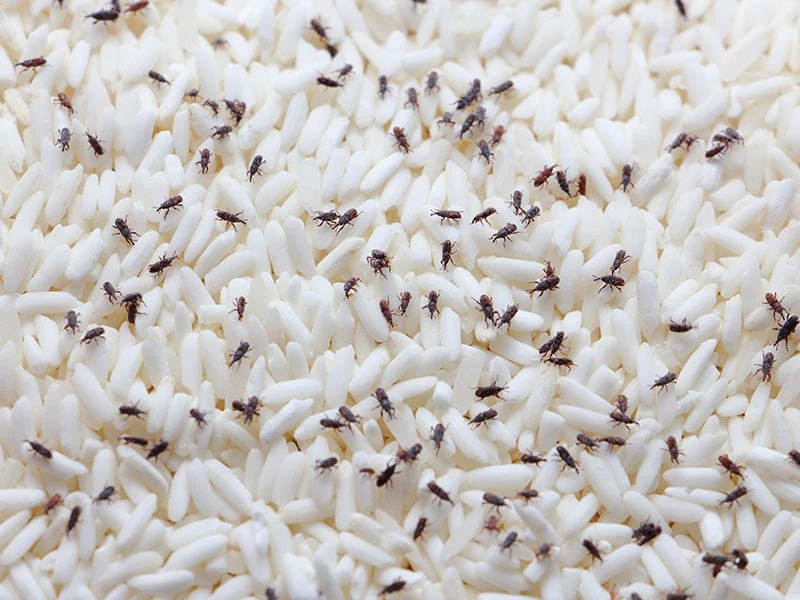
That insect is famously known as rice weevils or grain beetles. Coming from India, they are rice parasites, but they also enjoy eating other spices and condiments in your pantry. They are naturally not poisonous, but they don’t look appetizing on your plate either.
Rice weevils can magically spread all over your pantry and cause havoc to your whole kitchen. It is very reasonable for you to throw away that sack of rice if you see a weevil in it since they have strong fertility.
They lay eggs inside your rice. When the eggs hatch, lavas stay in your rice and eat rice from inside. When they are mature enough, they break free from your rice. And the cycle continues. That is why you can see your rice break down if that rice is weevils infested.
Now you want to know how to get rid of this bug? After all, you can’t just throw away everything. Well, one of the simple ways to terminate weevils in your stuff is to freeze them for four days. (2)
Another thing you should do is to sanitize your pantry with kitchen insecticides. You can buy processed chemical insecticides or make home remedies from vinegar and water.
Last but not least, it is also very important to check your rice before you buy it from the grocery stores.
Infestation Of Mold
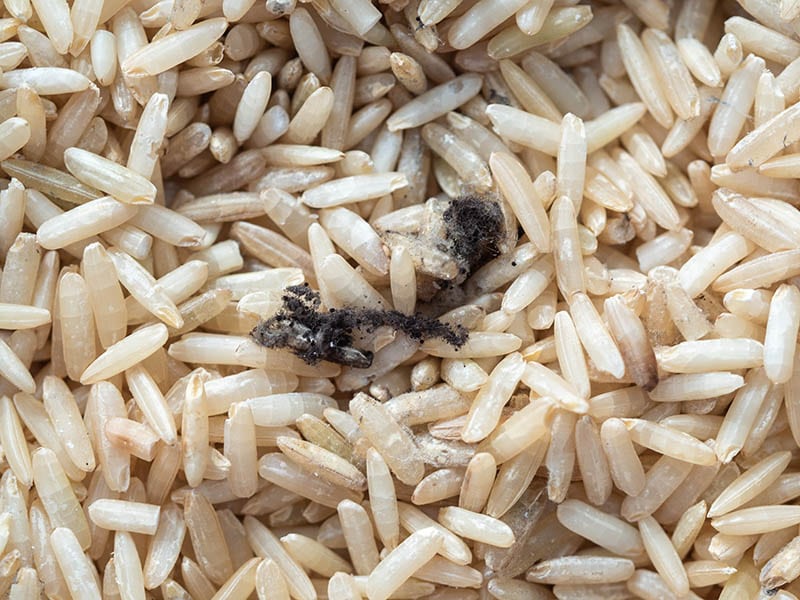
Humidity is the main culprit if you ever have moldy uncooked rice. As I mentioned earlier, uncooked rice is intrinsically dehydrated. You will increase the risk of getting mold in your rice by allowing your container to be wet or not dry enough.
Mold is such an annoyingly strong species that if you see a small patch of mold on your rice, it’s a hint of telling you to throw a whole bag.
And even when you store your rice in the freezer but don’t maintain a constant low temperature, mold will be the first destroyer of your rice.
Some mold can be noticed obviously, like in the picture above. You see mold appear in patches, but some evil strains of mold can turn your rice color into yellow or brown. People who consume this moldy rice can develop heart attack paralysis.
One of the importances is that yellow rice, which has this yellow mold, differs vastly from Golden Rice from India. Golden Rice is naturally yellow. So if your rice is initially white but turns yellow afterward, you know you need to trash that rice away.
Cooked Rice
Your cooked rice is more vulnerable than your uncooked rice. Therefore, many predators consider cooked rice as their target. They can be molds. They can be insects. And once your cooked rice is infested, there’s no way to save it.
Smell Of Fermentation
Funky smell, funny smell, weird smell, odd smell, etc. There are so many different ways to describe the odor you could scent when your cooked rice is spoiled. Spoilage happens because Bacillus cereus (B.cereus) is fractionating sugar in your rice.
When you let your rice outside, you allow the bacteria to grow in your rice at a comfortable temperature. The only way to prevent this is to refrigerate them. Bacteria won’t die from low temperatures, but they can deactivate themselves to hibernation.
Oily And Slimy
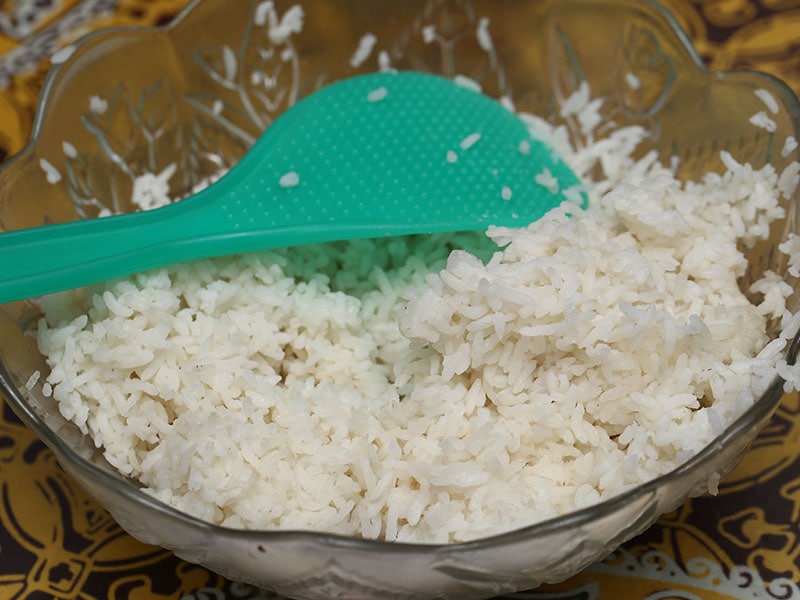
It is also a sign of bacteria’s activeness in your rice. After eating your sugar, they produce waste substances. These substances make your rice oily and kind of slimy. Consuming this will lead to food poisoning, so you should get rid of that rice.
Oxidation might be the culprit in this case. This occurrence can cause discoloration in cooked rice when it is exposed to the air.
Yellow, Green, Black, Or Red Mold
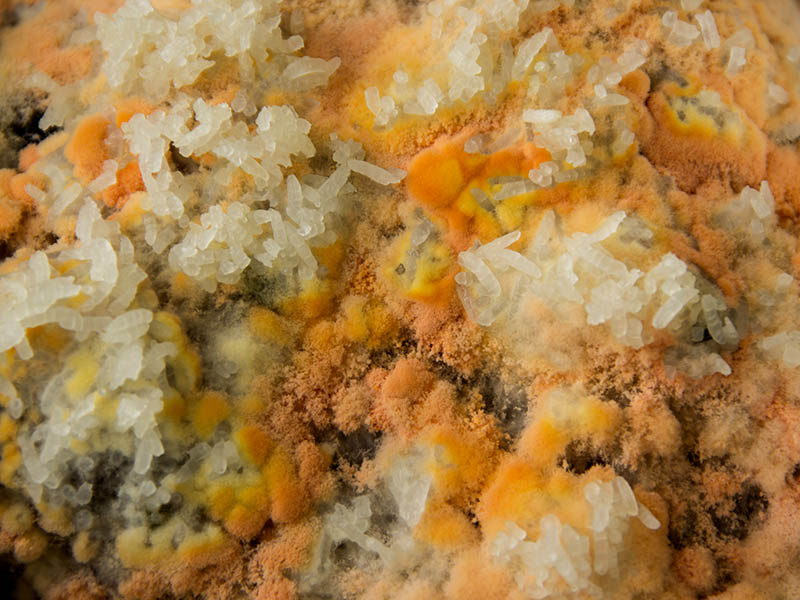
There is not only one type of mold that you will see on your cooked rice. Cooked rice molds can have various colors that they like. People have seen black mold, orange mold, green mold, or yellow mold on their rice.
These molds could be either a fungus-like koji mold (Aspergillus oryzae) or a bacteria-like black bread mold (Rhizopus stolonifer).
Once you spot mold on your rice, you know you have to throw it away. Mold roots can dig deeper than what moral humans could see.
Consuming food with mold could cause you several days in the hospital for food poisoning. The worst scenario of consuming mold rice is your death.
Here is a general look at how mold attacks your rice.
Food Poisoning From Eating Spoiled Rice
As I explained earlier, spoiled rice can lead to food poisoning, but the story does not just end there. There is more about rice spoilage that I need to tell you.
Spoiled Rice Can Poison You
Fried Rice Syndrome (FRS) is the fancy name for food poisoning from eating leftover rice. Rice that has two hours left outside at temperatures of 4-60 degrees Celsius (40-140 degrees Fahrenheit) can be considered spoiled.
You can blame this poisoning on B.cereus, which I had mentioned above. In 2019, there were 63,000 cases of FRS in the USA. The actual number was higher since there were numerous unreported cases.
People will start to show symptoms 6 to 15 hours after the consumption. Headache, tramp, and diarrhea are typical signs. In other severe cases, the patients need to be escorted to the hospital to receive more professional care. (3)
You can learn more about FRS and how to prevent it by watching this piece of news.
How To Deal With Food Poisoning
With this B.cereus poisoning, you can treat yourself by keeping your body hydrated and resting well. After a day, your body could have cured itself of the infection. In worse cases, hospitalization is a must since it might demand professional care.
To prevent infection of B.cereus, you need to constantly keep your rice at safe temperatures (from 4 to 60 degrees Celcius/40 to 140 degrees Fahrenheit).
You need to know that B.cereus naturally exists in your rice or other grain, and it only waits for the proper condition to flourish.
How To Store Rice The Right Way?
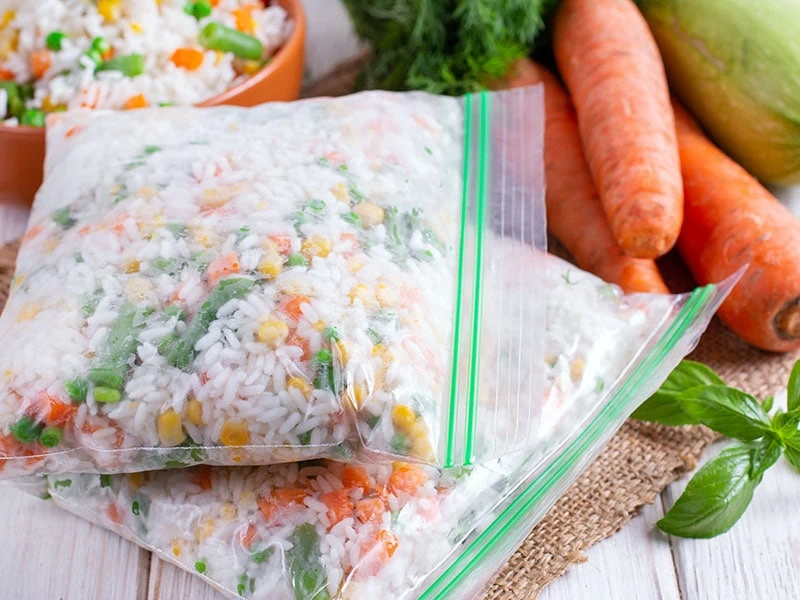
You are now a soldier who has armed themselves with knowledge about your enemy. But wait, let me offer you the proper weapons against all the mold and bacteria.
In this section, I will demonstrate all the methods that you can try to protect your rice from all harm.
Uncooked Rice
Although people say uncooked rice can last for decades, without a proper storing environment, your rice will go off very soon. In this section, I will show you how to maintain your rice’s best condition.
In The Refrigerator Or Freezer
The ultimate way to keep your rice is to put it where no insects can exist. But before shoving every gram of your precious rice in the freezer, you need to follow some steps to ensure the quality of the storage process.
Step 1: Divide Your Rice Into Portions.
You would like not to skip this step. It will help you in the future if one of your bags of rice might be infested. Since you have already separated them, you will only lose one bag.
Separating them before storing them is also very convenient because you do not have to do all the measuring work when you want to cook rice.
Step 2: Put The Rice In Separate Airtight Bags Or Lidded Containers, And Label Them.
You can combine this step with the previous one. You need to have airtight bags to contain them if you want to keep them for long. To be more secure, you can vacuum the bags. Your rice will have a safer environment that way.
You will also want to label your bags and have detailed schedules of when and how much you will use this rice. Having a plan is also a vital standard if you want to learn how to extend food’s shelf life.
Step 3: Pile In Order In Your Freezer
Now, what you need to do is stock your bags of rice in your freezer. You want them to be neat and clean so that cross-contamination won’t happen. It will be easier for you whenever you want to take your rice out as well.
This lady will give you visual instructions on how to freeze your rice.
Outside, Somewhere Dry And Cool
Sometimes, you buy a dozen bags of rice, and you store them in a barrel instead of just a 5-liter lidded jar. With that big quota, you can follow these steps to assure your rice storage.
Step 1: Be Sure About Everything
You need to review your barrel. Check and verify that your container is completely clean and dry. Don’t forget that moisture is your rice’s enemy.
Before buying that bag of rice, you want to look carefully at that bag. Ensure that there is no sign of weevils or other insects like a weird smell or rice dust.
You will also want to choose where that barrel of rice will be. People’s favorite choice is under a countertop. Avoid wet places like under the sink where your pipe system is occurring.
Step 2: Put That Bag In The Barrel
Some people pour the whole bag into the barrel. Others like to keep rice in the bag and put the whole bag in the barrel.
You will need a heavy lid to cover that barrel as well. You don’t want any rat or cockroach to touch your rice. If your lid is just a light plastic one, I recommend you find something heavy to put on the lid.
Step 3: Keep An Eye On Your Barrel Occasionally
Constantly checking on your rice condition will ensure a safe environment with no weevils or moisture for your rice. Therefore, this will preserve your rice better.
Cooked Rice
What you need to remember about storing cooked rice is its golden time mark of two hours and the temperatures from 4-60 degrees Celsius (40-140 degrees Fahrenheit).
Outside With Room Temperature
The key to keeping rice outside at room temperature is maintaining the heat. And you should finish that rice or put it in the refrigerator within two hours.
You will want to have something to cover your pot of rice, but you can’t have an airtight condition for cooked rice. Cooked rice contains moisture, and the fact that you keep water with rice in the same environment will provoke bacteria to grow.
I suggest you use a plastic basket with small screens to cover your pot of rice. You will want to prevent geckos, rats, or other insects from touching your rice. Just one touch, and they can infest a whole pot of rice.
In The Refrigerator Or The Freezer
If you refrigerate rice, you can keep it for 4-6 days. Storing cooked rice in the freezer can maintain its edibility for six months. But to get this maximum time, you need to fulfill some requirements.
The following steps will help you to extend your storage time.
Step 1: Cool It Down And Let It Dry A Bit.
Go back to the two hours cooling time. When you put your hot rice or anything hot in your refrigerator, you are pushing your refrigerator’s compressor to work harder. Therefore, your refrigerator’s lifespan will be degraded.
To cool your rice within two hours, you can spread them gently (you don’t want to smash it into mushy porridge, do you?) on a tray. This action will allow your rice to contact more with cool air and lower your rice heat faster.
Sun-drying will also lower your rice moisture. Dehydration will prevent your rice from breaking apart. You can also dry it by using the oven. Recommended heat and time for the oven method are at 175 degrees Celsius (350 degrees Fahrenheit) and 5 minutes.
Step 2: Put In An Airtight Container Or A Bag With Ziplock.
If you cook a lot of rice, you should divide your rice into portions. And all of them should be carried in airtight containers or bags.
You need to make sure that your bag is airtight. Any existence of moisture can spoil your rice. Therefore, your rice has to stay dry when you lock that bag.
Step 3: Pile Your Rice In Order And Add A Label
When you put your rice in the refrigerator, don’t throw it all over the place. You still need to place them neatly. This will give you an advantage in the future when you want to take them out. There will be no spillage, and your rice won’t be smashed.
There you go! That’s how you store your cooked rice in your refrigerator or freezer. Just one more thing: Do not forget about your rice! A label would be nice if you are afraid that you might forget about that rice.
How To Reheat Refrigerated Rice?
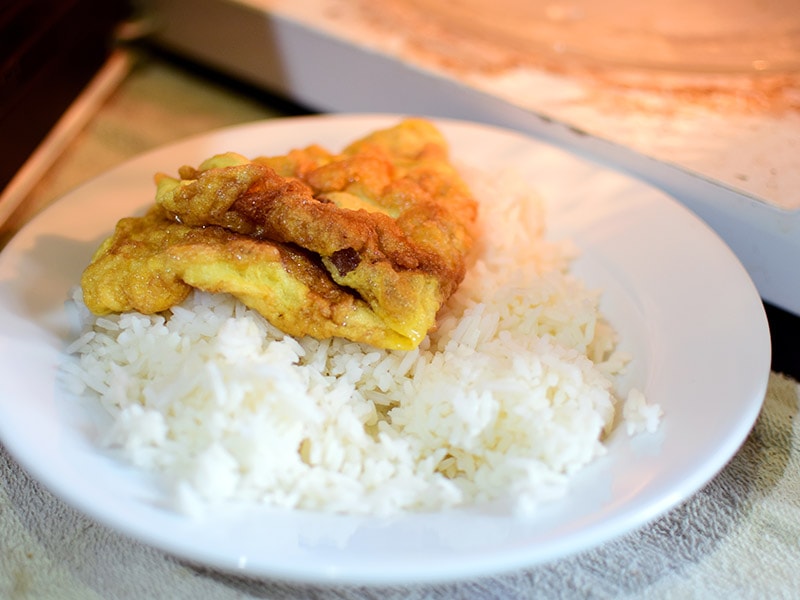
So it is the date. You decide that you will have rice today. You will open that bag of rice that you have tossed in the back of your refrigerator for two days. The rice was stored perfectly: no ill smell, no mushy feeling. But now, how will you reheat your rice?
With A Rice Cooker
If you have a rice cooker, this heating task is just a piece of cake for you. All you need to do is do some prep work and push a button.
Step 1: Wait For Your Rice
You need your rice to cool down a bit. It just came out from the refrigerator. 15 minutes of resting will be good.
Step 2: Put Rice In The Pot
You put your rice in the pot first, then add 1-2 tablespoons of water.
Step 3: Press The Button
Close the lid and push the “cook” button. When the button snaps back, you know your rice is ready.
With A Stove Or Range
Not everyone owns a cooker, but you don’t need one to reheat your refrigerated rice. A stove (or a range) is also very sufficient for the task.
Step 1: Wait For Your Rice
Let your rice rest for 15 minutes.
Step 2: Spread Your Rice On A Large Surface
Find a pan or a pot to spread your rice gently. Add 1-2 tablespoons of water to the rice.
Step 3: Turn The Heat On
Turn the heat on at 75 degrees Celsius (165 degrees Fahrenheit) for 5 minutes. Don’t forget to cover that pan or pot with a neat lid.
With A Microwave
A microwave can be the fastest option for this mission. With a heat-resistant container, you can quickly reheat your rice.
Step 1: Wait For Your Rice
Let the rice rest for 15 minutes.
Step 2: Add Moist In The Rice
You need to add 1-2 tablespoons of water.
Step 3: Turn On The Microwave
Put your rice in the microwave. Turn the microwave on for 1 minute at the highest heat.
Do not put any metal in the microwave unless you want your kitchen to explode.
In Case You Froze Your Rice
So you didn’t refrigerate your rice; you froze it. And now you have a brick of rice that desperately needs to be softened. You can follow the instructions below to “break the ice”.
Step 1: Let Your Rice Rest
After some time in the freezer, your rice will look like chunks of rice. You will want to wait for your rice to rest for around 15 minutes. Your rice now will be less cold and more fragile. You can tear them apart first into smaller pieces.
Step 2: Add Some Moisture
Put all of them in a bowl and add 2 tablespoons of water. Put the bowl in the microwave (you can use the stovetop method if you don’t have a microwave).
Step 3: Turn On The Heat
Turn the microwave to the highest temperature for 2 minutes. After that, if your rice is still cold, you can go for another 2 minutes.
You can also use the stovetop or cooker for this case. Just don’t forget to break your rice first.
Recipes For Leftover Rice
Are you sure you know how to cook rice without overcooking or undercooking it? It is a complex mission, I can understand that. Also, do you know what to do with leftover rice? I have some recipes that you can try when you have some rice lying around in the refrigerator.
Classic White Rice
Cooking white rice is an art that not everybody can do. But with the correct guidance and some more practice, I’m sure you can impress your family with a perfect pot of rice for dinner.
You can learn how to cook rice perfectly with Gordon Ramsay here.
Rice Pudding
Have you ever heard of a yummy dessert from yesterday’s dinner? Rice pudding is what you want to learn to cook. Trust me! You won’t be disappointed with this Italian-style dish.
Parmesan Rice Cake
So you are telling me that you don’t have a sweet tooth; you don’t like a sweet dessert. I got your back here, friend. Rice cake can be a munchy snack for you when you have a grumbling tummy in the afternoon.
Pork Fried Rice
With this recipe, you can learn how to turn yesterday’s leftover rice into a perfect dish to start the day. Nothing can be more nutritious and healthy than a breakfast dish of fried rice.
FAQs
Maybe there are still some questions lingering in your mind. Allow me to devote my knowledge to answering those questions for yours.
Yes, Your Rice Should Be Refrigerated
I hope that I have answered the question of today. You can refrigerate rice, but you also need to consider the pros and cons of cold rice. You will surely save your rice for later, but it will lose its tastiness.
You have learned so many things from this post, haven’t you? If you like the post, why don’t you share it with your friends and fellas? Anyway, it was a fun journey. See you soon. Thank you, and have a nice day!
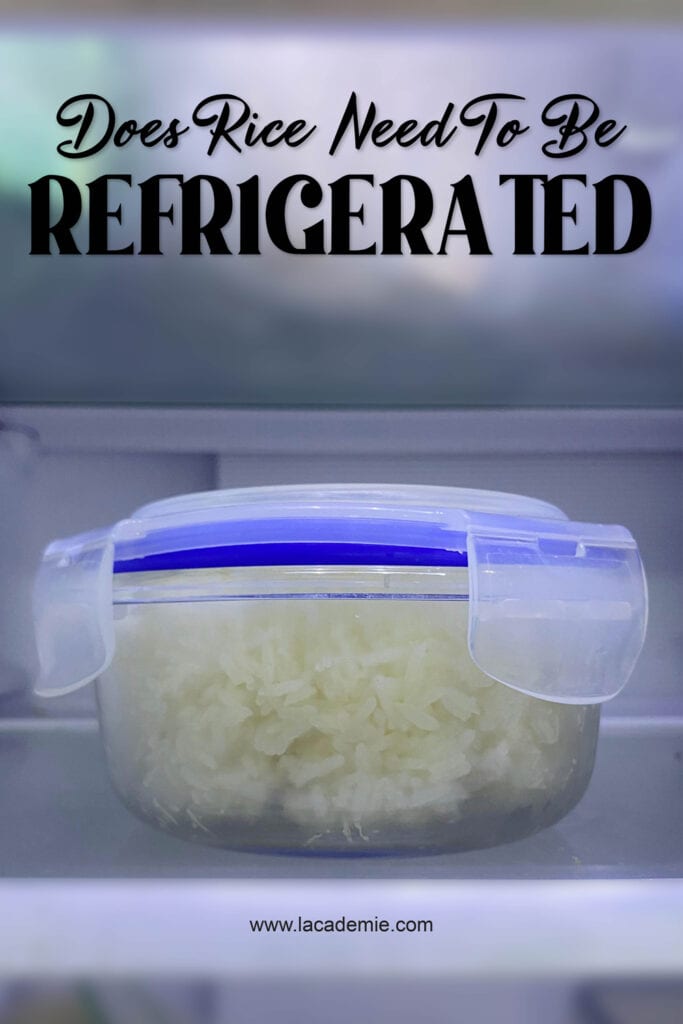
References
- University, U., 2022. Storing White Rice.
- HQ, H., 2022. Bugs In Rice – How To Get Rid Of A Rice Weevil Problem – How I Get Rid Of.
- Pelegrino, E., 2022. Fried Rice Syndrome: A common cause of food poisoning.

